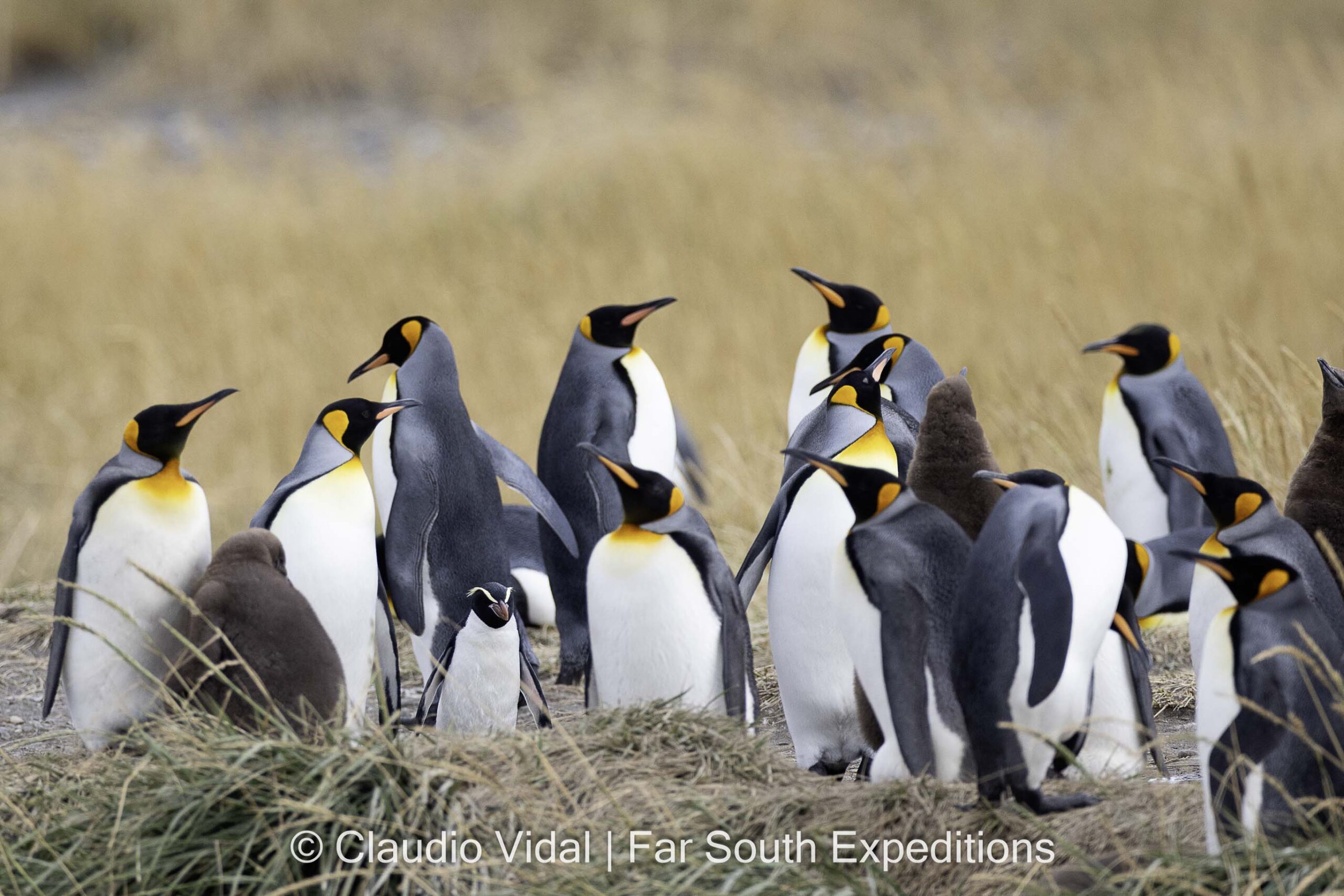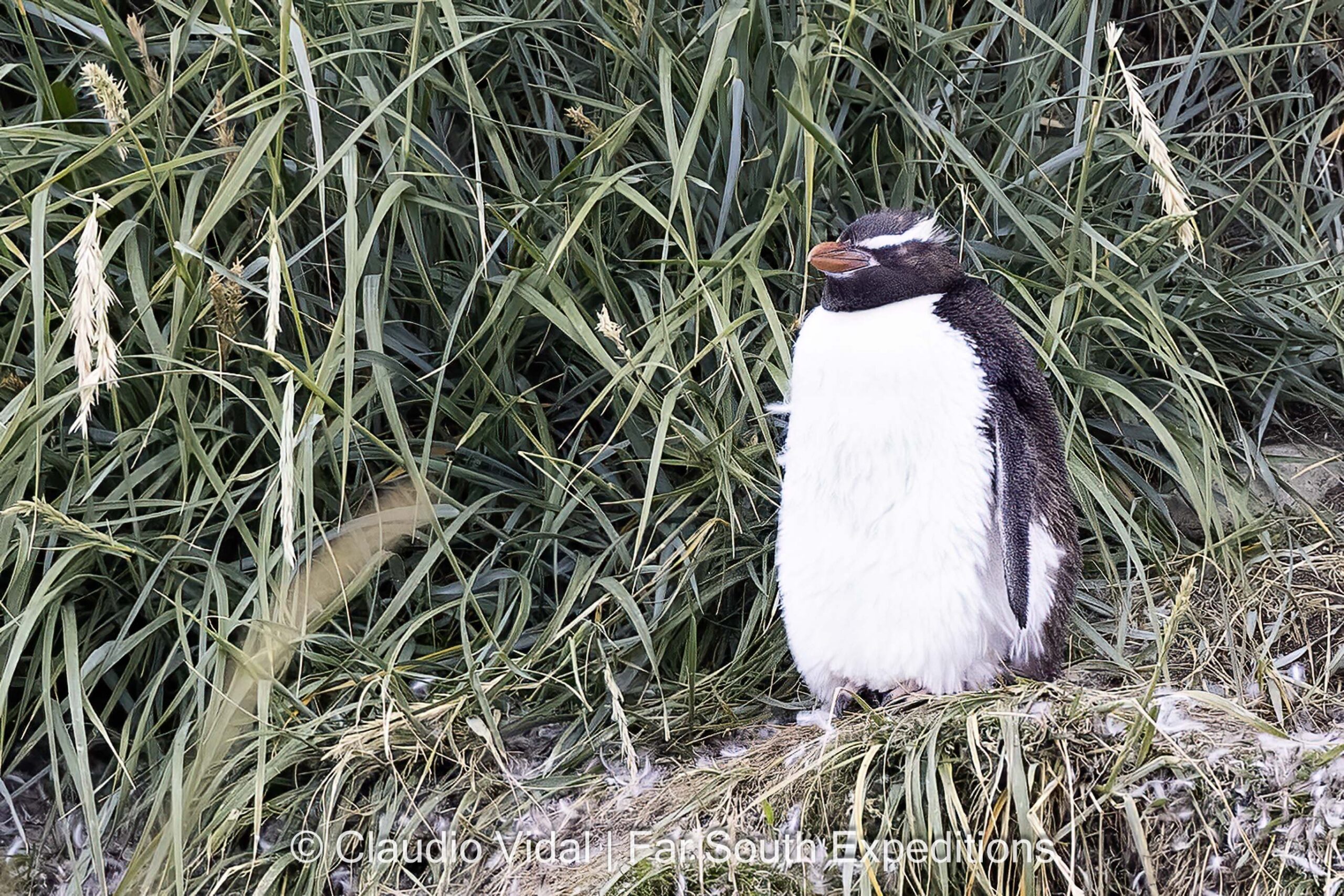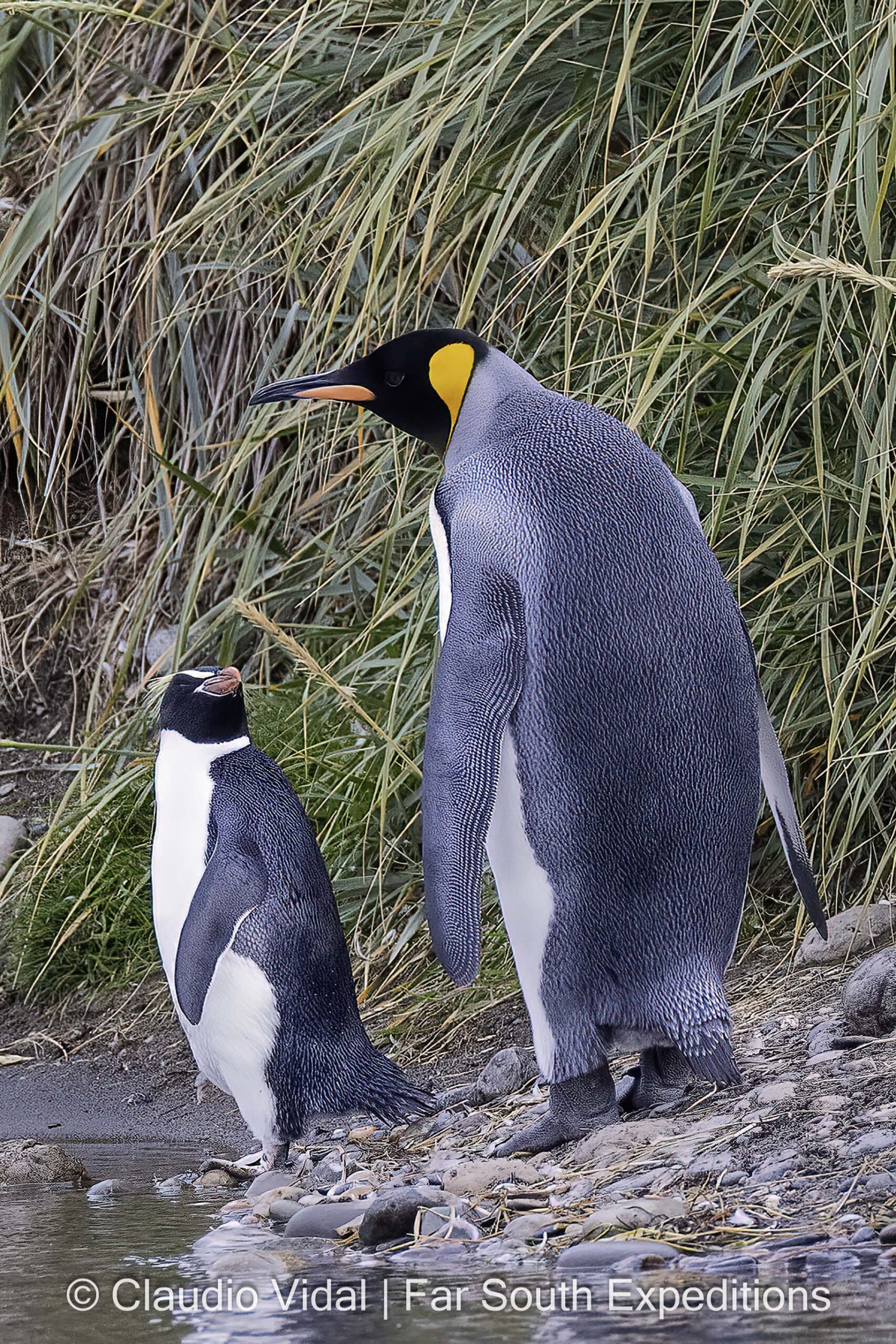During our expeditions to the King Penguin Nature Reserve, we had an encounter as unexpected as it was fascinating: a medium-sized crested penguin — the Snares penguin (Eudyptes robustus). Endemic to New Zealand, this species has crossed the ocean to temporarily settle at the southern tip of South America. In this new blog post, we share more about the surprising arrival of the Snares penguin in Chile.
From New Zealand to Magallanes: The first sighting in Chile
The first reported presence of a Snares penguin (Eudyptes robustus) in Chile occurred in the city of Punta Arenas, at the southern tip of the country. This event sparked great interest within the ornithological community, as this species is endemic to the Snares Islands, located south of New Zealand.
The appearance of this individual initially caused some confusion, since the Snares penguin belongs to the group of crested penguins in the genus Eudyptes, such as the southern rockhopper penguin (Eudyptes chrysocome) and the macaroni penguin (Eudyptes chrysolophus), which share similar characteristics.
Because of these similarities, it was initially thought that the individual belonged to one of those species. However, a detailed photographic analysis conducted by expert naturalists confirmed its identity as a Snares penguin.
A New Zealand Visitor in the King Penguin Colony
Subsequently, a Snares penguin was observed within the king penguin colony located on Tierra del Fuego Island, Chile. To this day, the individual remains at the site. This sighting has been remarkable not only because it involves a species documented outside its usual distribution range, but also because of its surprising ability to adapt to a new environment.
This New Zealand visitor seems to have arrived in Tierra del Fuego to stay—at least for now. Although it’s unclear how long it will remain, the penguin has spent around four months with the colony so far. During its stay, it has displayed highly social behavior, integrating as if it were just another member of the king penguin group. It has taken part in typical colony activities, such as communal resting on the beach and group outings to the sea, which are believed to be collective foraging trips.
A notable milestone during its time there was the completion of its molting process at the site, suggesting that it found both environmental and social conditions favorable enough to remain for an extended period.
Eudyptes Genus
Penguins of the genus Eudyptes are distinguished by their striking crests composed of yellow or orange feathers that extend from the forehead above the eyes, forming a tuft or “crown.” This feature gives them their common name, “crested penguins”.
In particular, the Snares penguin has a limited geographic distribution, as its breeding population is found almost exclusively on the Snares Islands. For this reason, the appearance of an individual in Tierra del Fuego has been as unexpected as it is exciting for penguin lovers and birdwatchers who join us on our expeditions to the area.
Field Identification: How to Distinguish the Snares Penguin
During our visits to the king penguin colony, we had the opportunity to observe and identify both species. The differences between them are evident even from a distance, especially in size, coloration, and behavior. Additionally, they belong to different gender.
The king penguin reaches a height of approximately 95 cm, making it significantly larger than the Snares penguin, which measures between 56 and 73 cm. The latter is distinguished by its robust orange beak, with a pinkish gape at the base. It also has yellow feather crests that extend from the base of the beak, crossing over the eyes to the sides of the neck. Viewed from the front, these crests form a distinctive “V” shape.
In terms of coloration, the Snares penguin has a black back, face, and throat, which contrast sharply with the white of its underparts, creating a distinctive pattern that facilitates its identification in the field.









Leave a Reply
Your email is safe with us.